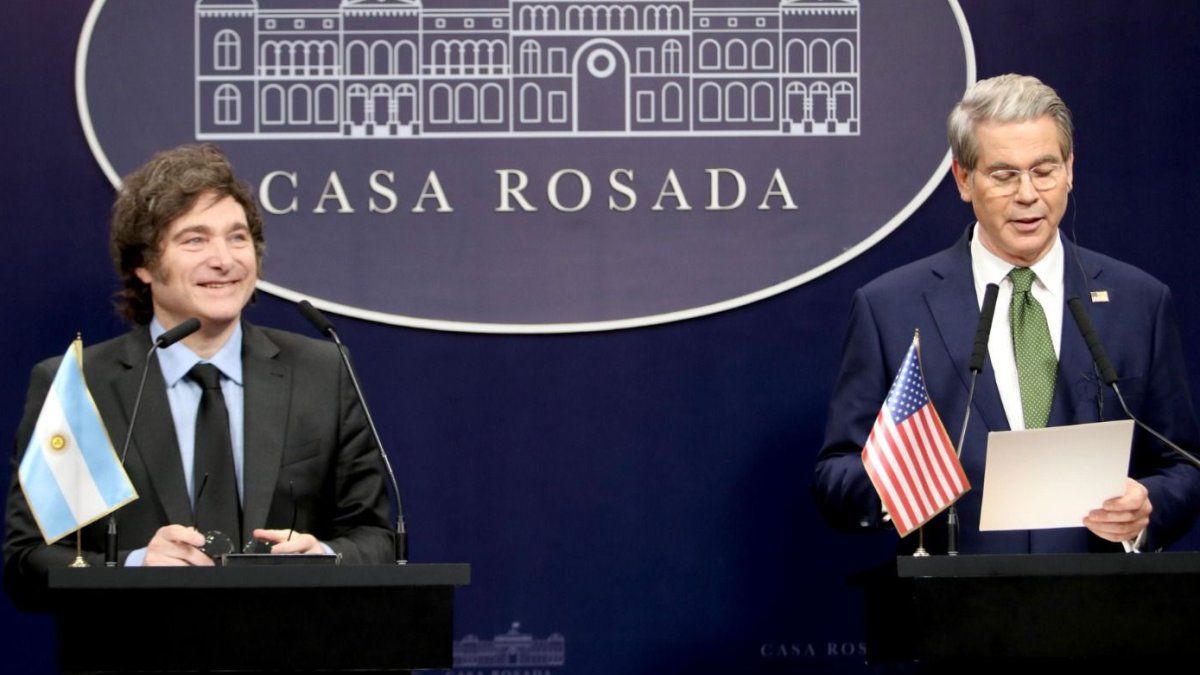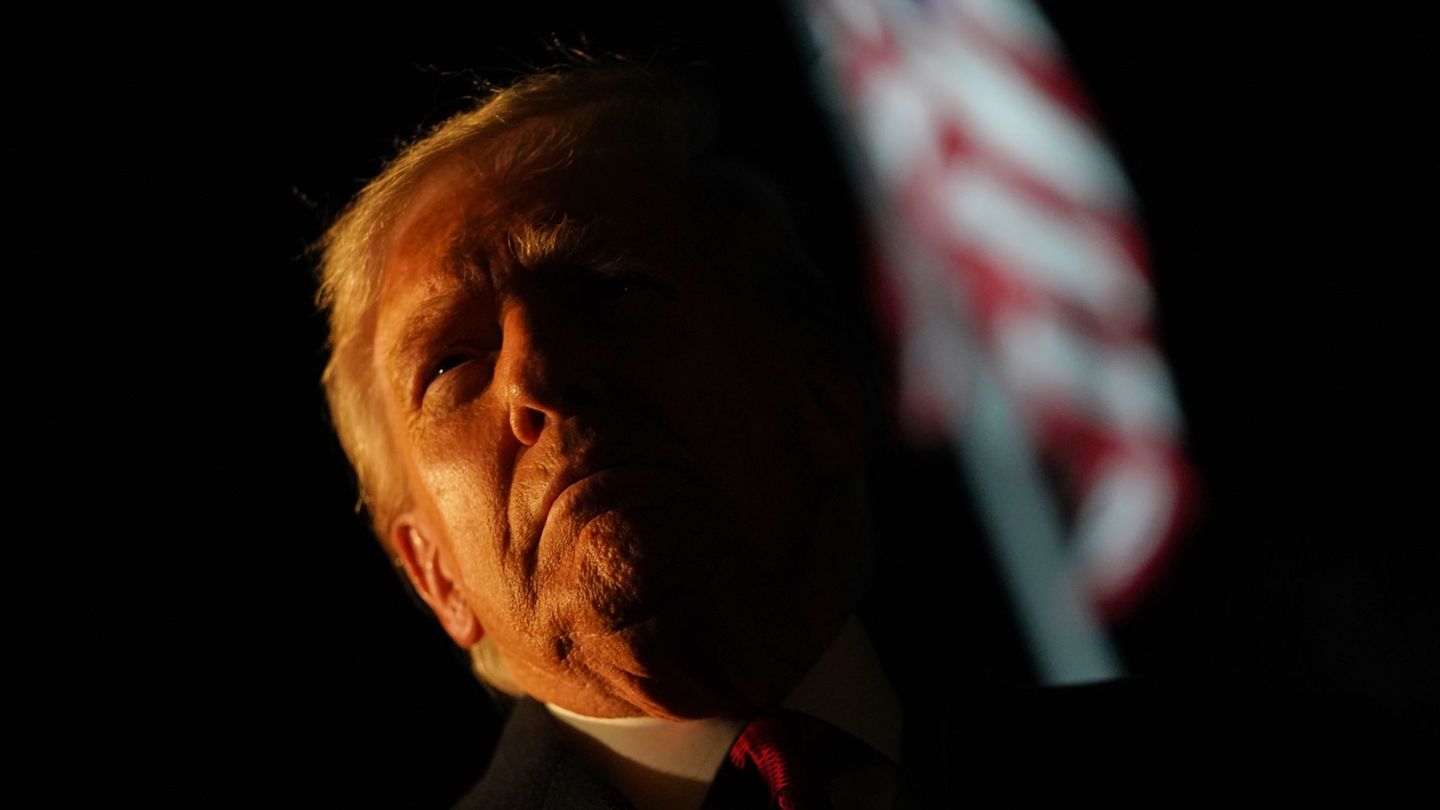From Washington came a new support for the libertarian government before the declaration of one of the main US officials, promising that in front of an international crisis, it could receive access to the treasury stabilization fund of the treasure.
After his fleet Scott Besenthe told last Tuesday to a select group of investors gathered by JP Morgan that in the case of an external shock they could give the Argentine government a direct credit line, if the economic course is maintained, through the Exchange Stabilization Fund (ESF). What did he refer to? What is the spH?
The content you want to access is exclusive to subscribers.
This is the exchange stabilization fund (FEC), which is composed of three types of assets: dollars, foreign currencies and special turn rights (DEG)International Reserve Active created by the International Monetary Fund (IMF). As in the US Treasury regulations, the FEC can be used to buy or sell currencies, keep active in dollars and DEG, and provide financing to foreign governments. But, All Fec operations require the express authorization of the Secretary of the Treasury, Who is responsible for the formulation and implementation of the US international monetary and financial policy, including intervention policy in the exchange market. Therefore, the FEP assists the Secretary of the Treasury in the performance of these responsibilities who by law has broad discretion in the use of FEC resources.


FEC: How was born and what is used for
When was the FEC born? Its legal base is the 1934 gold reserve law amended at the end of the ’70sit provides in part that the Treasury department has a stabilization fund; And in line with the government’s obligations before the IMF in terms of exchange agreements and an orderly system of exchange rates, the secretary, with the approval of the president, may carry out operations with gold, currencies and other credit instruments and values.
The dad began to carry out intervention operations in the exchange market in 1934 and 1935, Then in 1936 he held credit agreements and from then until today he has participated in more than one hundred credit or loan agreements with foreign governments or central banks. As the department recalls, after World War II, the EMF made monetary transactions in treasure gold and expanded its participation in credit agreements. During the ’60s, the treasure policy focused on deter the capital’s capital outputs and encouraging the main foreign central banks to maintain reservations in dollars instead of demanding gold from the US collection.
“The FEC resumed its intervention operations in the exchange market in March 1961 (for the first time since the mid -1930s), but it soon became clear that their resources, by themselves, were insufficient to sustain transactions of the necessary magnitude,” says the treasure. Therefore, at the invitation of the treasure, The Federal Reserve (FED) joined exchange operations in February 1962 and began to sign a network of SWAP agreements with other central banks to obtain short -term currencies that they would use to absorb the term sales of dollars made by foreign central banks that covered the exchange risk of their holdings in dollars.
To obtain currencies and reimburse the Swaps withdrawals of the Fed, During the ’60s the treasure issued non -negotiable medium -term values called Swiss francs (red bonds) and sold the product to the Fed. But in August 1971, the US ceased gold transactions with foreign monetary authoritiesthus eliminating the need to moderate the loss of American gold reserves. In December 1974, the FEC transferred, through a sale to nominal value, a gold balance of 2.02 million ounces to the general treasure account, given the probability that the fest did not make more transactions to stabilize the value of the dollar against gold.
Temporary swap lines
Then in the ’70s, the US accumulated important foreign exchange reserves and The EMAIn addition, that same year The treasure under the dollar support program issued the Carter bonds in the Swiss and German capital markets to acquire the additional currencies necessary for sale in the market through the FEC. In the mid -1980s, the main industrial countries embarked on a process of intensification of policies. The agreement of the five (G-5) group of 1985 served to strengthen the exchange adjustments between the main currencies and resulted in important coordinated sales of dollars in intervention operations, and then the 1987 Louvre agreement survived reinforcing that of the square. Since the signing of the Plaza Agreement to mid -1990, the US monetary authorities were involved in net purchases and net sales episodes of dollars with several countries.
As for loans or credits granted by the FEC, many have been pre-negotiated temporary swap lines with a possible borrower (there is a short-term swap line of US $ 3,000 million with Mexico under the North America framework agreement of 1994). But also From the 70s to the early ’90s, almost all credits of the FEC consisted “bridge” loansthat is, with short -term expiration and expressly linked to a programmed disbursement of an international financial institution (generally the IMF) and reimbursed through it. But the mechanism lost relevance at the end of the 1990s, when the IMF and the World Bank developed procedures that allowed a faster disbursement of resources.
Source: Ambito
I am a 24-year-old writer and journalist who has been working in the news industry for the past two years. I write primarily about market news, so if you’re looking for insights into what’s going on in the stock market or economic indicators, you’ve come to the right place. I also dabble in writing articles on lifestyle trends and pop culture news.




